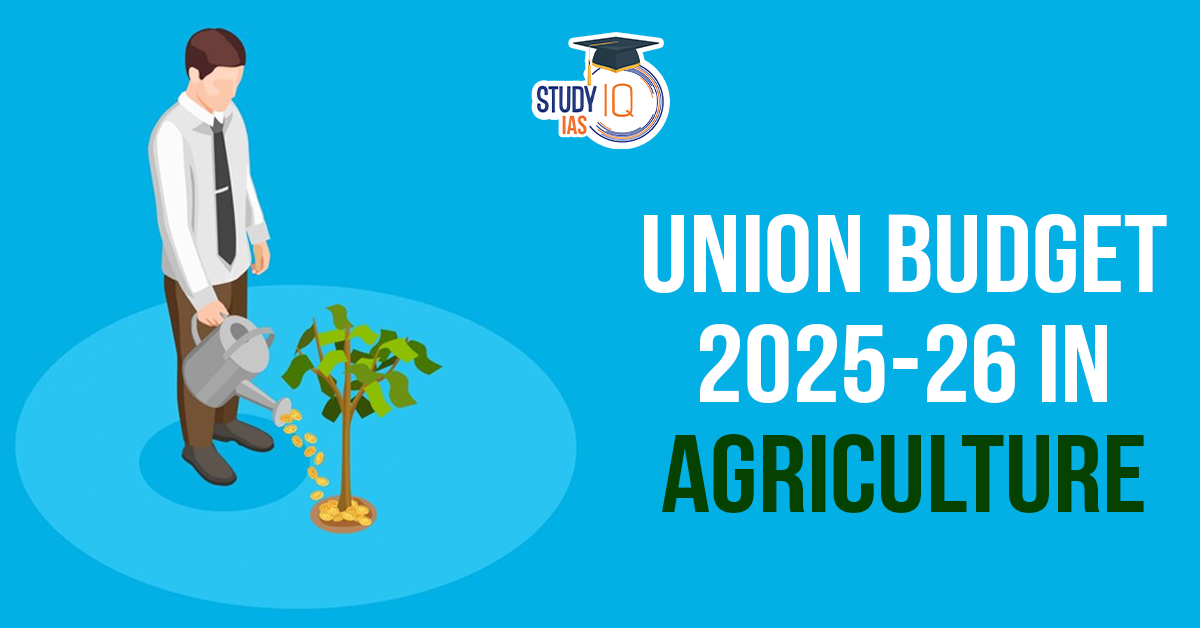Table of Contents
Challenges in Indian Agriculture
- Impact of Climate Change: Temperatures in India have risen by 0.7°C since 1951.
- July-September precipitation has declined by 6%, increasing risks to agricultural productivity.
- Soil Health Issues: Low organic carbon content and inadequate moisture retention in soils.
- Current farming practices and imbalanced fertiliser usage exacerbate the problem.
- Skewed Fertiliser Subsidy Policy: Urea is heavily subsidised compared to other nutrients like phosphate (P) and potash (K), leading to overuse of nitrogen (N).
- Micronutrients like iron, zinc, and boron are underutilized.
- Pro-Consumer Bias in Food Policy: Frequent export bans (on onions, wheat, sugar, and rice) and below-cost domestic market dumping by FCI harm farmers.
- Economic cost of rice to FCI: ₹39/kg; sold in the open market at ₹29/kg.
- Negative Producer Support Estimate (PSE): India’s PSE is -15.5%, indicating an “implicit tax” on farmers, compared to 14% support in China and OECD countries.
Key Suggestions for Agriculture Budget 2025-26
- Increase Agri-R&D Spending:
- Current allocation: <0.5% of agri-GDP.
- Proposed: Double to at least 1% of agri-GDP.
- Promote Soil Health:
- Support practices that enhance organic carbon and moisture retention.
- Emphasize balanced fertilisation (macronutrients and micronutrients).
- Introduce a Direct Income Transfer Scheme:
- Based on per-hectare basis, using existing data (fertiliser sales, soil health cards, PM-KISAN).
- Free fertiliser prices from controls to restore balance in N, P, K usage.
- Promote technological innovations like nano-urea and nano-DAP.
- Benefits:
- Improve nutrient use efficiency.
- Reduce environmental damage and plug leakages in subsidies.
- Restore farmer trust through effective communication.
- Learn from Milk Revolution:
- Milk: India’s largest agri-commodity with 239 million tonnes production, surpassing the US (103 million tonnes).
- Farmers receive 75-80% of consumer price in the milk value chain.
- Revolutionise Fruits and Vegetables:
- Currently, farmers receive only ~33% of consumer price.
- Establish a dedicated board like NDDB (National Dairy Development Board) for fruits and vegetables.
- Appoint a visionary leader akin to Verghese Kurien to drive reforms.
- End Anti-Market Practices:
- Stop export controls, private stock limits, and futures bans.
- Ensure market-driven pricing without excessive government intervention.
- Encourage Long-Term Market Reforms:
- Move from pro-consumer bias to balanced farmer-consumer policy.
- Facilitate open markets to enhance farmer incomes and stabilize supply.
- Promote Sustainable Agriculture:
- Strengthen initiatives like the Natural Farming Mission.
- Recognize that natural farming alone cannot feed a growing population (1.67 billion by 2050).
- Combine biofertilisers with appropriate chemical fertilisers for sustainable productivity.


 Food Adulteration in India: Definition, ...
Food Adulteration in India: Definition, ...
 Sunrise Sectors in India, Key Characteri...
Sunrise Sectors in India, Key Characteri...
 Gold Price Surge in India, Key Drivers a...
Gold Price Surge in India, Key Drivers a...





















